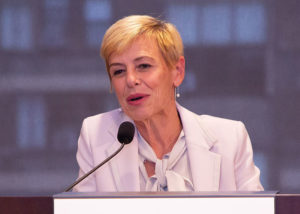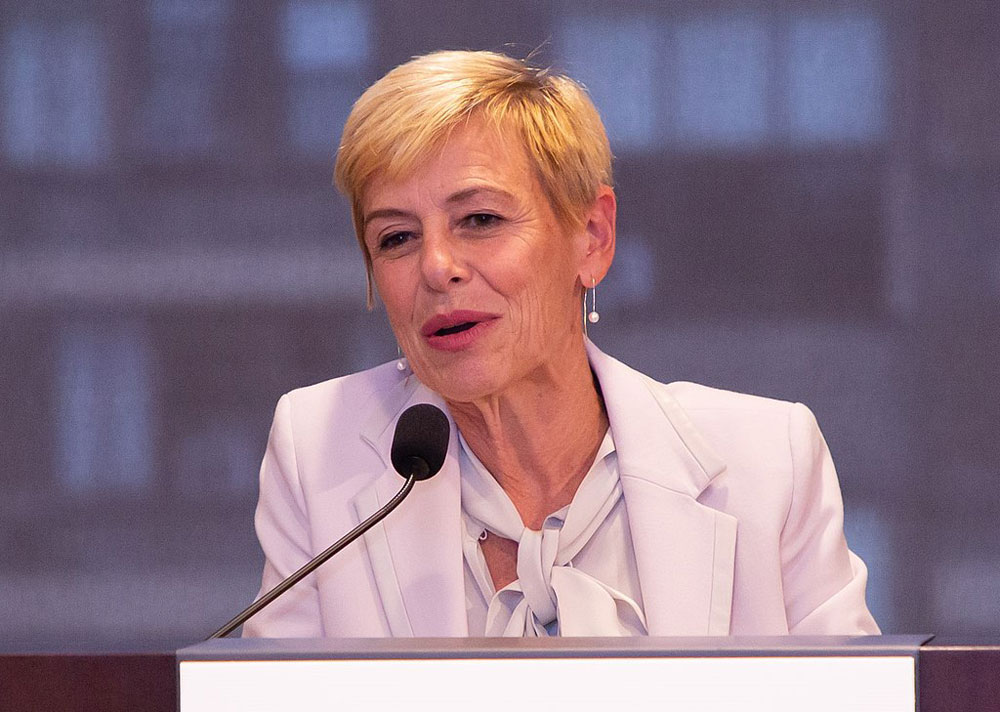
In coming up with the idea to hold a “Philanthropic Challenge on Economy and Finance” at its 2015 annual meeting scheduled for the end of April, the Council on Foundations presumably had to have drawn some justification, something that convinced them that a “contest” (the COF announcement includes a link to “official contest guideline [sic] rules” would be a good thing for the Council to pursue for an industry or sector ostensibly devoted to a deliberative process.
For those who don’t necessarily read Council on Foundations email blasts about events scheduled for the annual meeting, the contest is open to individuals in 501(c)(3) organizations (multiple people within a single organization are permitted to apply). Applicants will “share how they want to build their economies at a local or national level.” Judges will select three finalists, who are then eligible for coaching from the Entrepreneurs Foundation of New Hampshire. At the final session of the annual meeting, the finalists will be subjected to “rapid-fire questions” about the “feasibility and efficacy” of their projects. The winner will be selected by whoever is in the audience in that last session and will take home $40,000 to help “develop the idea,” with the runner up to get $10,000 (not to be pocketed personally, as the prizes go to the contestants’ organizations). Maybe the unlucky third contestant will get a parting gift as a consolation prize, a copy of the home game?
The Council’s leadership had to have known that pundits of all sorts would have a field day with this, poking fun at the idea as though it were the philanthropic equivalent of the lovechild of The Price Is Right and The Dating Game. But something much more troubling is at work here. The Council’s “Philanthropic Challenge” may be ripe for humor, but the concept isn’t a joke. It is evidence of a troubling trend in institutional philanthropy that surprisingly gets extolled and replicated by respected grantmakers and, in this instance, their national trade association.
In fairness, there are believers in the idea of philanthropic scrums masquerading as thoughtful grantmaking. The Knight Foundation, which has run several such contests, posts “Why Contests Improve Philanthropy,” with six contest justifications: their attraction of “new blood and ideas,” the value they create “beyond the winners,” their role in helping grantmakers “spot emerging trends” and “change (their) routine,” their fit with or enhancement of existing strategies, and the role they play in “thoughtfully engag[ing] the public.” The Knight Foundation, however, has conducted a number of such contests that are thematically well developed, run over multiple years, and distribute bigger money prizes than the $40,000 first prize behind door number one at the Council: $39 million given to 104 winners of the Knight Community Information Challenge since 2008 (an average grant of $375,000), $26.8 million to 257 winners of the Knight Arts Challenge, also since 2008 (average over $104,000), and the Knight News Challenge which has distributed $32.7 million to 97 winners since 2007 (average grant of $337,000). McKinsey & Company has produced an entire volume on the different kinds of philanthropic contests, 216 with prizes of over $100,000 in its 2009 report with nary a doubting word about the efficacy of the idea.
Even with those Knight Foundation sums, there is something about putting foundation grants (or a Council on Foundations grant) up to a popular vote that seems to be fundamentally at odds with the notion that philanthropic grantmaking is a deliberative process, warranting more thinking and analysis than “rapid-fire” questions tossed at contestants in Password or Family Feud. If we assume that the Council really means its Philanthropic Challenge as something more than just an entertainment gimmick to keep conference attendees from drifting out to Fisherman’s Wharf, Lombard Street, and the Presidio before the conference wrap-up, then the Council has a lot of repair work to do. A few obvious concerns are referenced below.
First, we would hope that the hyper-excited language of “philanthropic entrepreneurs” (sounding like the recent in-vogue concept of “philanthropreneurs”) and “innovative leaders in philanthropy” would get exorcised from this. The trend in philanthropic competitions is typically innovation, newness for the sake of newness. So much of the trend in entrepreneurialism in philanthropy veers toward a search for shiny new pennies when what is often really needed is skill in implementation of good ideas that are already known and tested—especially in the realm of the economy and finance. For an initial investment of $40,000 for the winner, the thinking ought to be about developing the capacity and infrastructure to make something that should work and is known to be able to work really happen.
Second, to the extent that the ultimate decision is going to be made by “the audience that will vote on their favorite proposal,” the COF’s Philanthropic Challenge steers away from deliberative philanthropic decision-making toward the structure and content of a popularity contest. It is like crowdsourcing—vote for your favorite here—except that at the Council there will be an expert board to vet the initial proposals, select three final contestants, and ask questions of the contestants in public after their three-minute pitches. The well publicized and sometimes controversial online charity competitions of recent years, the Pepsi Refresh Challenge and the Chase Community Giving Challenge, selected their winners through online voting, though the money that these multi-billion dollar corporations gave out was nothing compared to the free do-gooder publicity they got in return. The Council’s competition is much more exclusive, with the voters limited to those conference attendees who can pay the $1,000-$1,200 annual meeting registration fee for COF members and the $1,400-$1,600 fee for non-members. Rather than free publicity, the incentive of the Council’s $40,000 top prize could spur dozens, maybe hundreds of nonprofits to put time into contest applications for no return other than having supplied the Council with free nonprofit labor, ingenuity, and an entertaining conference wrap-up session. Wouldn’t it be much better for those who put all this effort into these contest submissions if the Council were to funnel them to foundations whose missions and geographies suggest that they ought to be potential funders of these great ideas?
Sign up for our free newsletters
Subscribe to NPQ's newsletters to have our top stories delivered directly to your inbox.
By signing up, you agree to our privacy policy and terms of use, and to receive messages from NPQ and our partners.
It would be a terrible turn of events if the COF Philanthropic Challenge were really just the latest step in the devolution of foundation practice toward crowdsourcing or commercialized audience participation events like the Pepsi Challenge or the Chase Community Giving contest. Do recall what the yield was from these contests: In 2010, a big winner of the Pepsi Refresh Challenge was Invisible Children, a nonprofit that has been roundly criticized for its programs of dubious credibility—and now gone out of business—but was able to gin up, like many of its competitors, campaigns of its supporters to register their votes. Another Pepsi winner was Teach for America, hardly the kind of organization that desperately needed Pepsi’s quarter-million amidst the organization’s federal government earmarks and the huge flow of contributions it receives from foundations, corporations, and hedge-fund gurus. The official rules of the Council’s contest say nothing about specific qualifications of types of nonprofits allowed to enter, as distinct from, for example, the Pepsi Challenge, which restricted its contest to groups with budgets below $10 million. Other than being a 501(c)(3), the Council’s contest has no such constraints, so small charities that want to take a stab at this race could find themselves competing against nonprofit behemoths, with nothing in the guidelines giving any kind of edge to groups with less than overstuffed coffers.
Third, the notion that the contest will include and consider all of the best ideas and evaluate them on their merits without ideological or political bias is a technocratic concept that belies how the world operates. Remember that one of the criticisms of the Chase Community Challenge was the decision of JP Morgan Chase to remove some of the competitors deemed to be controversial, such as two competitors focused on drug policy, another that was against women’s abortion rights, and others whose programs challenged mainstream orthodoxy—for example, a cancer program that promoted alternative, natural therapies. Are there potential contestants that might be too extreme or unpalatable for the Council’s expert panel? It is nice to imagine technocratic ideas for “jumpstarting the economy” that rise above ideological differences and garner cross-cutting left/right endorsement, but that doesn’t fit the reality of how communities function.
Fourth, isn’t it odd that the contest is called a “Philanthropic Challenge” when the competitors are likely to be potential foundation grant recipients? Given how much of philanthropic work has been subject to criticism, inside and outside of institutional philanthropy, an alternative concept for a philanthropic challenge would be to have foundations compete and present their best ideas on how they can put the totality of their assets—grants, PRIs, endowment investments, and professional expertise—to work for nonprofits working on issues of the economy and finance. Then a panel of nonprofits, or even nonprofits and foundations combined, could review the proposed ideas and select the foundation that best puts its maximum effort into groups doing the frontlines work on economic development. That would be a nice reversal of things, having nonprofits pick the “best” foundations.
That’s really the ultimate unfortunate message here. At a time when foundations are talking so much about their grantees as partners and stakeholders, this contest tells nonprofits where they really stand in the power relationship. The COF announcement follows on the heels of the Shark Tank-style philanthropic competition announced by the multimillionaire investor behind Spark Capital, Todd Dagres. Dagres apparently has become tired or bored with traditional philanthropy. (IMDb reports that Dagres founded the Face of an Angel Foundation to raise money for kids with vascular tumors, though NPQ could not find a nonprofit entity with that name and purpose in our search of GuideStar) Instead, he is launching a philanthropic competition in which charities pitch their programs and then get grilled by a panel of potential investor-sharks. Once the sharks select the charities in which they will invest, they also become organizational advisers to the groups “to bring financial stability and management expertise” to the winners. In the Boston Globe article describing his new venture, Dagres bemoaned having been a “mouse” or a “gnat” as a donor to other charities, such as hospitals such as Brigham and Women’s and Boston Children’s, due to the large amounts of money they raised dwarfing his own contributions. For whatever serious intent he and the other executives he has recruited might have, in which way he won’t be a “gnat” but a much more influential “shark” (even though his contribution to the Tank contest will be only “up to $100,000”), if nonprofits needed a reminder of the power relationship in philanthropy, the shark-tank style of contest, whether they are grilled by Dagres and other venture capitalists or by a panel of expert foundation people at the Council meeting, really rubs it in.
Think that the shark-tank model of “lightning round” (first made popular as the bonus round in Password) grilling of prospective grantees is simply a plaything of a bored, philanthropy-weary venture capitalist like Dagres? Try the progressive millennial favorite, the SXSW festival. This year, SXSW hosted its fourth LAUNCHedu startup competition—and, as the website highlights in italics, hosted by the Bill & Melinda Gates Foundation—a “mashup of educational stakeholders” to select winning proposals from early-stage education startups. At 10:00am on March 10th, there was the “LAUNCHedu competition lightning round” grilling of finalists (selected from online applicants), followed at 3:00pm by a panel where experts shared their reactions and discussed “the role that entrepreneurial endeavors play in the classroom.” Having the next morning to prepare, the finalists gathered at 1:30pm for the “LAUNCHedu competition showdown round,” with the winners announced at a live party that evening—hosted by the Walton Family Foundation. The LAUNCHedu process looks a bit like a search for inventors of the best new educational widget, and toward that end, one of the half-dozen judges is Robert Metcalfe, the inventor of Ethernet (and currently the Murchison Fellow for Free Enterprise at the University of Texas at Austin). But the pedigrees of the other judges reflect perspectives on the business of education, not just its technology: for example, a former Teach for America member, the head of the New Schools Venture Fund (who was formerly a Gates Foundation program director), and the former president and CEO of the Pearson Technology Group.
In the end, there may be a realpolitik message in the Council’s “Philanthropic Challenge.” So often, nonprofits submitting their applications to the shrinking proportion of foundation grantmakers that continue to accept unsolicited proposals think of the process as a game, the challenge being to stand out against their competitors. Their pitches have to grab the attention of the foundation program officer oversaturated from the process of reading proposals that all use the recommended codewords. In this case, the codewords are “creativity,” “innovation,” “entrepreneur,” “evidence-based practice,” “collaboration,” “sustainability,” “partnering”—all words that a smart nonprofit will find in the Council’s contest rules and try to incorporate into their two-page online applications and three-minute video or live pitches. That may be the message of the Philanthropic Challenge, the Dagres shark tank, and the LAUNCHedu mashup. Listen to what the foundations hint at as their priorities, make sure you reflect their language and codewords, get ready for a quickie pitch, and hope the audience applause meter goes in your favor.












